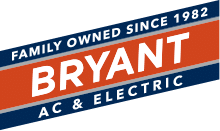
Life Is Maintenance
Preventive Maintenance! It’s catching plaque in your veins before…you know. It’s getting the oil changed and rotating tires. It’s flossing, bathing, hair cutting, vitamins, kale and kefir and on into infinity.
AC’s Need Maintenance
You could do it yourself. It only takes 4 years or so, working as a tech, reading 1000 manuals, some fun technical reading on condensers, capacitors and the dynamics of air flow. Easy!
There are a lot of reasons WHY your AC needs maintenance. And living in Austin! It’s so hot here. If your AC goes down in Summer? You better have hotel points.
Seriously though, a Preventive Maintenance Contract will:
- Extend the life of your equipment
- Catch small issues before they become costly repairs
- Improve air quality and comfort
- Maintain high performance and efficiency and lower bills
- Keep system Safe
- Get you Discounted cost on parts for the life of the contract
Contact Us:
Get In Touch With Us Today!It’s simple, for you
A typical contract consists of two visits, one before summer for Cooling and one before Winter for Heating.
Each visit consists of a 60–90-minute tune up covering these 26-Points:
- Blower Motor – measure amperage and voltage for proper operation
- Thermostat – test for proper operation, calibrate, and level
- Cleaning existing air filter (as needed)
- Bearing – inspect for wear and lubricate
- Inspect indoor coil if accessible
- Confirm proper return air and size
- Inspect Condenser Coil
- Refrigerate – monitor operating pressures
- Safety Devices – inspect for proper operation
- Electrical Disconnect Box – inspect for proper rating and safe installation
- Electrical Wiring – inspect and tighten connections
- Test/inspect contactors for burned, pitted contacts
- Inspect electrical for exposed wiring
- Inspect and test capacitors
- Inspect fan blade
- Clean condenser coil and remove debris
- Inspect service valves for proper operation
- Measure Supply/Return temperature differential
- Inspect ductwork for energy loss
- Compressor – monitor, measure amperage and volt draw and wiring connections
- Check Unit for Time Delay Relay
- Check Unit for Isolation Pads
- Inspect suction line for proper fittings
- Inspect all fittings for signs of oil and/or leakage
- Check lines and fittings with refrigerant leak detector
- Check the condition of Blower Belt, if applicable
